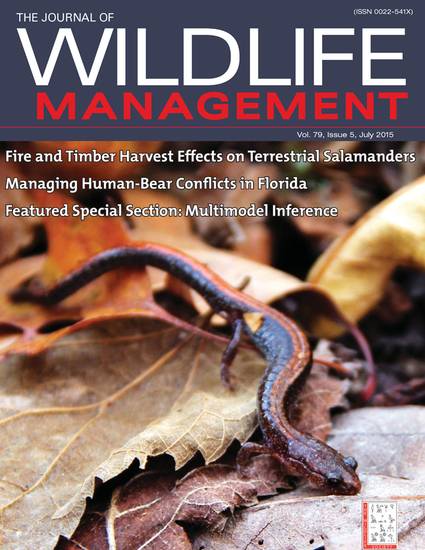
Article
Estimating the Residual Value of Alternate Bald Eagle Nests: Implications for Nest Protection Standards
The Journal of Wildlife Management
(2015)
Abstract
For over 30 years, bald eagle (Haliaeetus leucocephalus) nests and nest trees have been managed using a combination of spatial buffers and time-of-year restrictions. Most management standards include the protection of nests currently in use as well as alternate nests and trees that have lost nests. Protection is extended to alternate nest structures under the assumption that they provide value to the breeding population. However, the notion that these structures hold enough residual value to warrant the cost of their protection has not been fully explored. I used nest histories (n > 2,250) from a long-term (1962–2011) dataset collected in the lower Chesapeake Bay to evaluate the relationship between management costs and residual value across the range of management scenarios currently in use. I used a joint, multistrata, live-recapture/dead-recovery model in Program MARK to estimate probabilities of annual survival for active and alternate nests and transition probabilities between active and alternate nests. My primary objective was to assess the residual biological value of alternate nests and trees relative to the management costs required to protect them. I estimated the per capita management costs and the residual value of alternate nests and trees. Survival rates were 0.902 ± 0.007 (mean ± SE) and 0.703 ± 0.017 for active and alternate nests, respectively. Of 1,163 alternate nests, 352 (30.3%) were determined to be re-used within 5 years. However, the likelihood of re-use declined with time. Most re-used nests were re-used in the first year (76.4%), with virtually all (98.6%) being re-used in the first 3 years. Only 9.9% (168 of 1,699) of trees that had lost nests were re-used within the first 10 years. Nests were rebuilt in 32% (equating to 3.1% re-use) of re-used trees in the first year and in 71.4% of these trees in the first 3 years. Implementation of current national management guidelines resulted in 2.35 nest equivalents of management cost for each active nest in the population. The residual value and cost functions diverged over time such that the return on social investment diminishes over the management periods. The cost-to-benefit relationship is particularly poor when the protection of alternate nests is extended beyond 3 years and when protection is extended to trees that have lost nests.
Disciplines
Publication Date
May, 2015
DOI
https://doi.org/10.1002/jwmg.888
Citation Information
Bryan Watts. "Estimating the Residual Value of Alternate Bald Eagle Nests: Implications for Nest Protection Standards" The Journal of Wildlife Management Vol. 79 Iss. 5 (2015) p. 776 - 784 Available at: http://works.bepress.com/bryan-watts/303/
